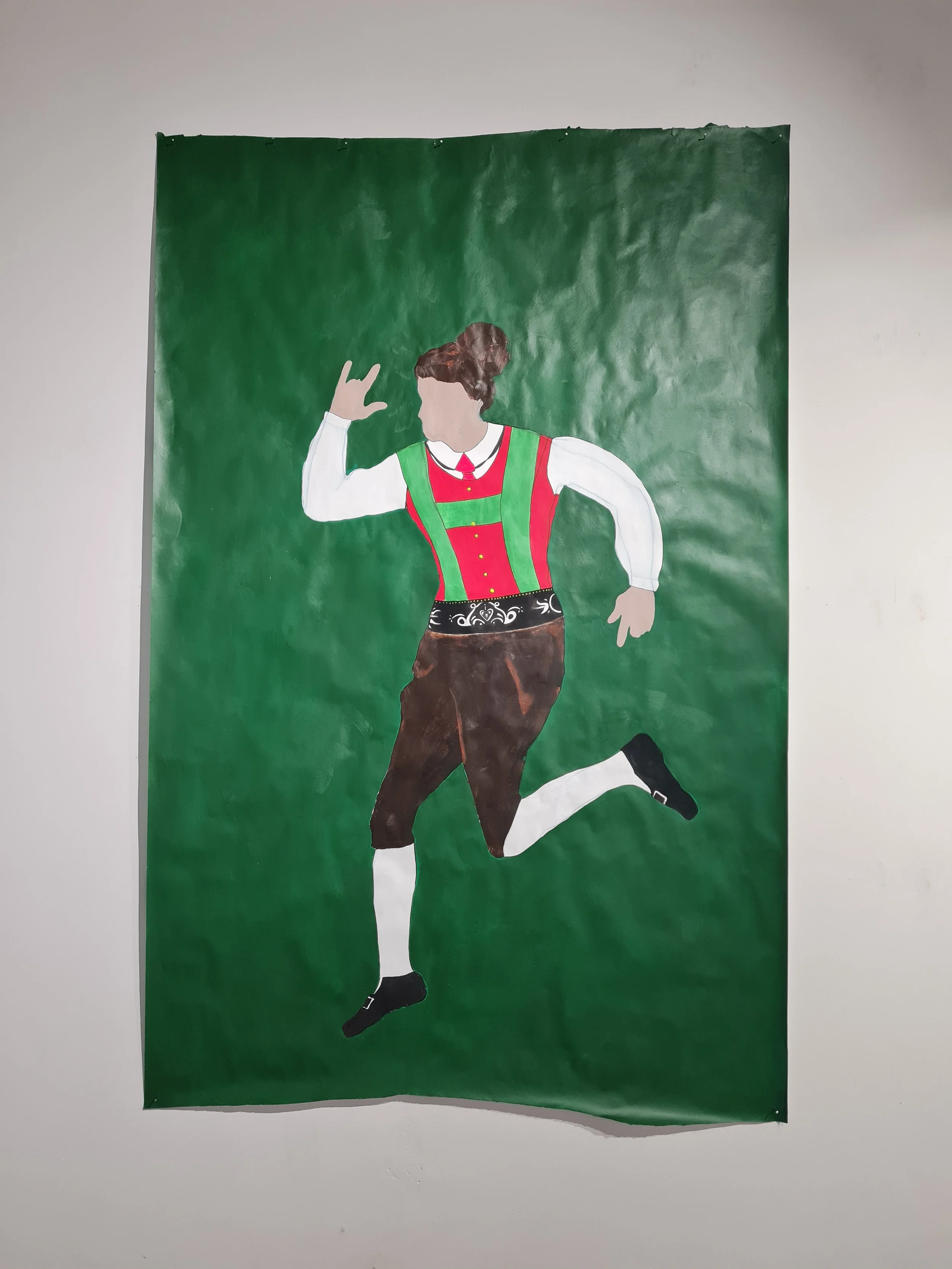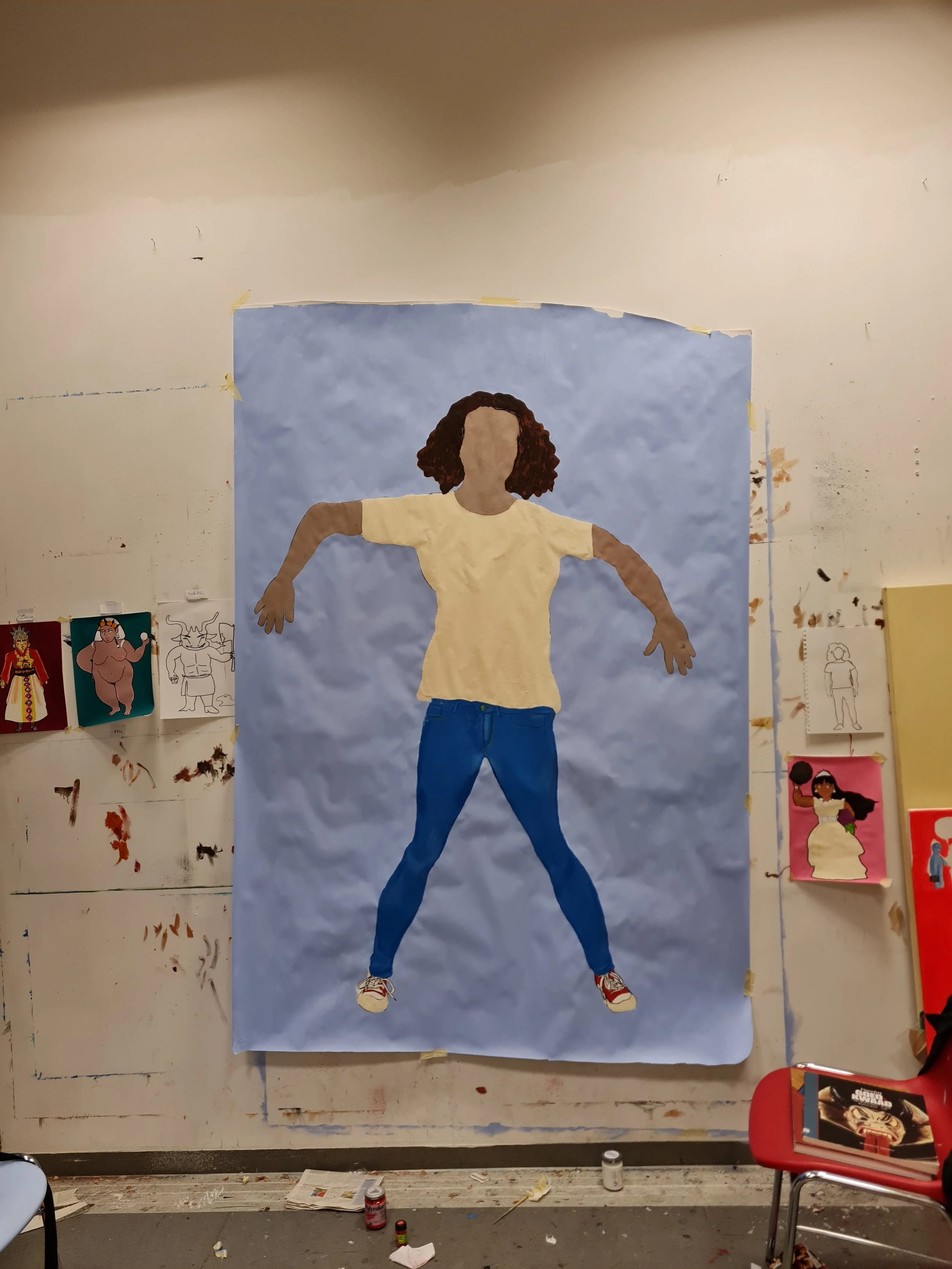
L'ABITO FA IL MONACO
L'ABITO FA IL MONACO
L’abito fa il monaco
Acrylic on cotton rag paper
600cm x 200cm (all the works together)
2022- on going serie
This works were exposed in Berlin at Kühlhaus during the project Flashcards.
L’abito fa il Monaco (2022–ongoing) is a series of large-scale acrylic works on paper, using my own body as a silhouette to explore layered aspects of my mixed identity.
The project currently includes three figures… “Südtiroler Mina”, “Berber-Amazigh Mina” and, in the middle, the “everyday-drop-in-the-ocean Mina” — each representing a distinct facet of who I am. More figures will follow as my experiences evolve; the next I’m working on is will be “part-time minimum wage waitress Mina”.
Like my earlier works Lezione di Nuoto and Antillia, this series engages with themes of identity, memory and visibility, but here the focus is even further inward, toward embodiment and the complexities of cultural fashion. It navigates the tension between imposed narratives and self-definition.
This series is a response to how often my identity is questioned. If I say, “I am Italian,” I’m met with suspicion — asked if I “really” am, told I “don’t look Italian,” or pressed to explain “where my parents are from” (as if my existence needed justification), as though my first answer were somehow untrue. In the current political climate, these daily micro-challenges are amplified from the top, reinforced by rhetoric that treats people who look like me as “less Italian” (or less in general, lets be fair) than others..
Italian Südtiroler Mina wears Lederhosen, a playful critique of the gender norms and binaries of my South Tyrolean roots.
Berber Amazigh Mina appears in a translucent Amazigh dress, drawn from a childhood photo in which I tried on a traditional Shilha Berber garment in Ifrane.
Everyday Mina wears my lived-in, self-owned clothes: a white T-shirt and jeans, the simplest, cheapest and most durable choice.
Each background not only complements the clothing but also closely matches my own skin tone, a deliberate decision. As a child, I was told to use Fleischfarbe (“flesh color”) in any self-representation which is a shade that never resembled me. This work reclaims that space, embracing visibility on my own terms.
L’abito fa il Monaco is not just about clothing. It is a claim to presence, a refusal to be reduced, and a call to look beyond appearances without ignoring their weight. The title plays on the Italian idiom l’abito non fa il Monaco (“the habit does not make the monk”), inverting it to suggest both irony and truth: what we wear can reveal and conceal who we are.


































